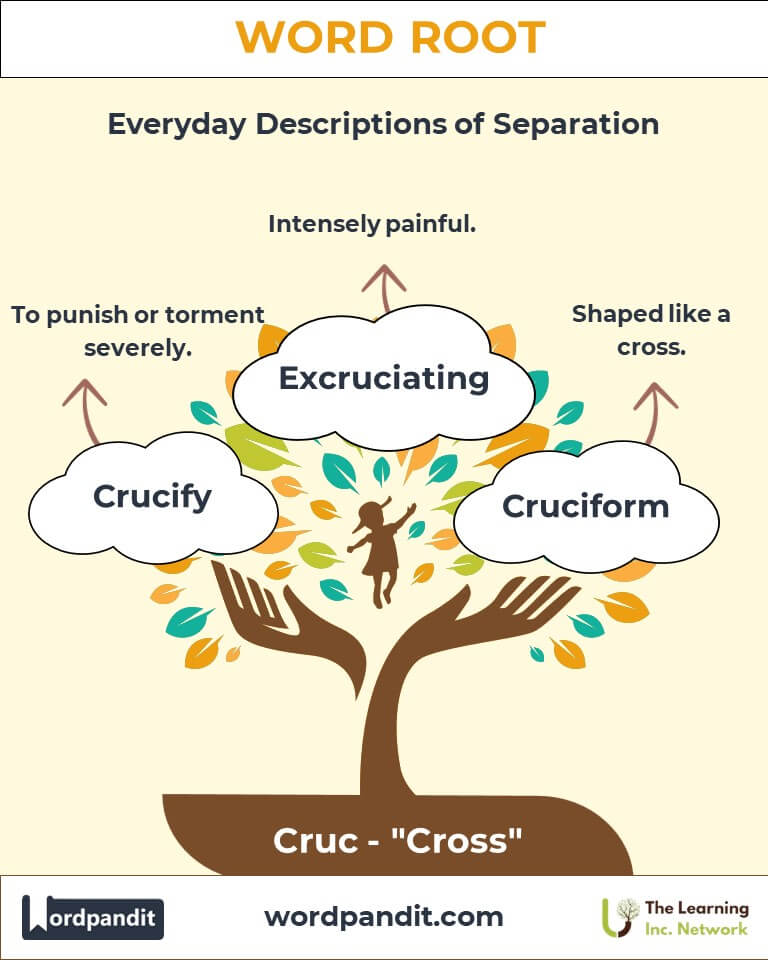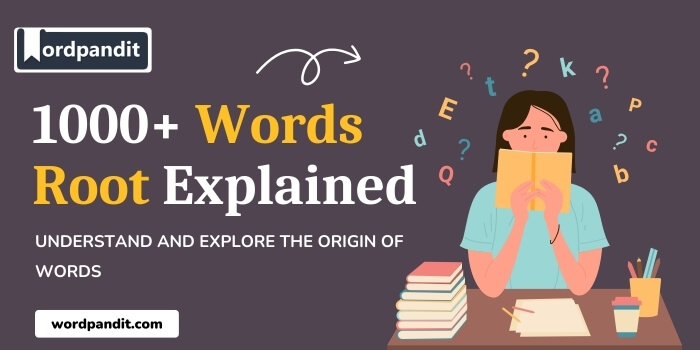Cruc: The Crossroads of Meaning and Impact
Explore the powerful significance of the Latin root "cruc," meaning "cross," and its influence across history, religion, and language. From pivotal moments ("crucial") to acts of profound symbolism ("crucify"), this root lies at the heart of transformation and meaning.

Table of Contents
- Introduction: The Essence of "Cruc"
- Etymology and Historical Journey
- Mnemonic: Unlocking the Power of "Cruc"
- Common "Cruc"-Related Terms
- "Cruc" Through Time
- "Cruc" in Specialized Fields
- Illustrative Story: "Cruc" in Action
- Cultural Significance of the "Cruc" Root
- The "Cruc" Family Tree
- FAQs about the "Cruc" Root
- Test Your Knowledge: "Cruc" Mastery Quiz
- Conclusion: The Living Legacy of "Cruc"
1. Introduction: The Essence of "Cruc"
Imagine standing at a crossroads, a place where decisions shape destinies. The Latin root "cruc," meaning "cross," embodies this intersection of paths and ideas. Found in words like "crucial" (essential or decisive) and "crucify" (to bind or punish on a cross), "cruc" highlights pivotal moments and transformative acts, spanning religion, culture, and language.

2. Etymology and Historical Journey
The root "cruc" stems from the Latin crux, meaning "cross." Historically, the cross was both a literal tool of execution and a potent symbol of sacrifice and redemption, particularly in Christian theology. Over time, "crux" evolved into metaphors for challenges, turning points, and essential truths. By the Middle Ages, derivatives like "crucial" emerged, emphasizing the importance of decisive moments.
3. Mnemonic: Unlocking the Power of "Cruc"
To remember "cruc," picture a dramatic crossroads where two paths intersect, forming a cross. At this symbolic junction, decisions shape futures.
Mnemonic Device: "Cruc is the cross where choices and challenges meet."
4. Common "Cruc"-Related Terms
- Crucial (kroo-shuhl): Extremely important or decisive.
- Example: "It was crucial to address the issue before it escalated further."
- Crucify (kroo-sih-fy): To punish or torment severely; originally, to execute on a cross.
- Example: "The critic's harsh words seemed to crucify the artist."
- Crux (kruhks): The most important point of an issue or argument.
- Example: "The crux of the matter lay in the financial discrepancies."
- Excruciating (ik-skroo-shee-ay-ting): Intensely painful, derived from the idea of extreme suffering on the cross.
- Example: "The runner described the excruciating pain of a pulled muscle."
- Cruciform (kroo-sih-form): Shaped like a cross.
- Example: "The church's cruciform structure was an architectural marvel."
5. "Cruc" Through Time
- Ancient Use: The cross (crux) symbolized execution and was a tool of Roman justice.
- Medieval Period: Christian theology imbued "cruc" with themes of redemption and sacrifice.
- Modern Usage: The root appears in secular contexts, such as "crucial" for importance and "excruciating" for severe pain.
6. "Cruc" in Specialized Fields
- Religion:
- Crucifixion: Central to Christian narratives of sacrifice and salvation.
- Application: Reflects themes of suffering and spiritual transformation.
- Medicine:
- Excruciating: Describes severe physical pain, emphasizing intensity.
- Application: Used in patient assessments of pain levels.
- Architecture:
- Cruciform Designs: Cross-shaped layouts for cathedrals and landmarks.
- Application: Symbolizes faith and geometric balance.
7. Illustrative Story: "Cruc" in Action
At a crucial moment in her career, Maya faced a decision that would define her future. Standing metaphorically at a crossroads, she recalled the symbolism of the cross—a place of challenge and transformation. Choosing the path less traveled, she embraced the uncertainty, later reflecting that the "crux" of her decision led to unimaginable growth.
8. Cultural Significance of the "Cruc" Root
The cross carries profound cultural weight, symbolizing faith, decision-making, and perseverance. In art and literature, crucifixion scenes and "crucial" turning points often represent human struggles and triumphs. The root "cruc" resonates across disciplines as a metaphor for endurance and pivotal change.

9. The "Cruc" Family Tree
- Cur- (Latin "to run"):
- Concurrent: Running together.
- Crux- (Latin "cross"):
- Crux: Essential point.
- Tor- (Latin "to twist"):
- Torture: Infliction of pain.
10. FAQs About the Cruc Word Root
Q: What does "cruc" mean?
A: "Cruc" means "cross" and comes from the Latin word crux. It represents both literal and metaphorical intersections, challenges, and pivotal events.
Q: Why does "excruciating" mean extreme pain?
A: "Excruciating" is derived from the Latin "excruciare," meaning "to torment on a cross." It describes severe physical or emotional pain.
Q: What is the "crux" of an issue?
A: The "crux" refers to the most critical or essential part of a problem or argument. It symbolizes the intersection or point of greatest importance in resolving the issue.
Q: Is "cruciform" only used in architecture?
A: While "cruciform" is commonly associated with cross-shaped designs in churches, it can describe any object or structure with a cross-like shape.
Q: What does "crucial" signify?
A: The term "crucial" originally referred to something at a crossroads or critical point. It now describes events or elements essential to an outcome.
11. Test Your Knowledge: Cruc Word Root Quiz
1. What does "cruc" signify?
2. Which word means extremely painful?
3. What is the crux of a debate?
4. What does "cruciform" describe?
5. What does "crucial" mean?
12. Conclusion: The Living Legacy of "Cruc"
The root "cruc" embodies the profound symbolism of the cross, representing intersections, challenges, and pivotal moments. From historical crucifixions to modern decisions described as "crucial," it highlights the enduring power of transformation. Understanding "cruc" enriches our grasp of language and reminds us of the crossroads we face in life and learning.












